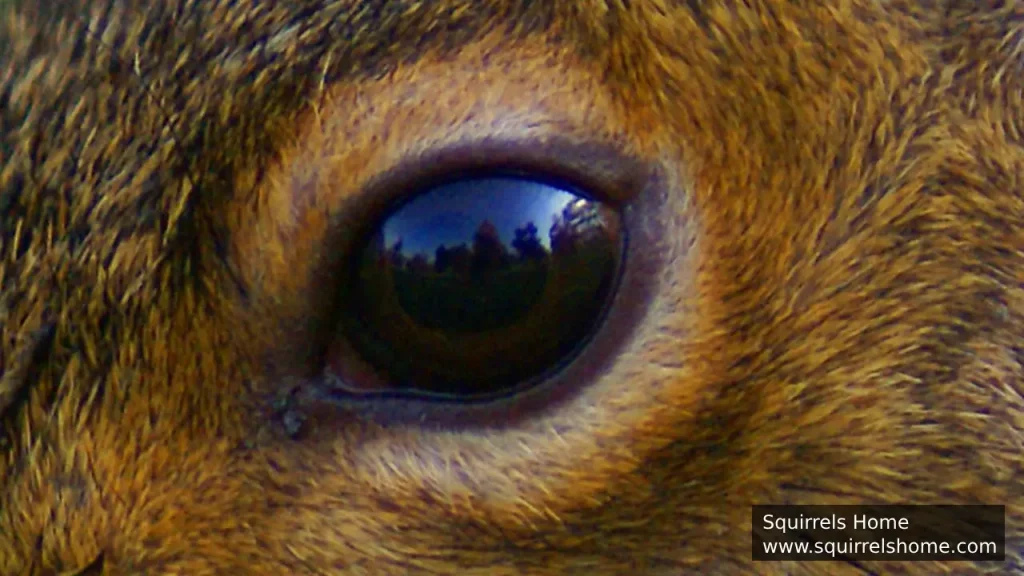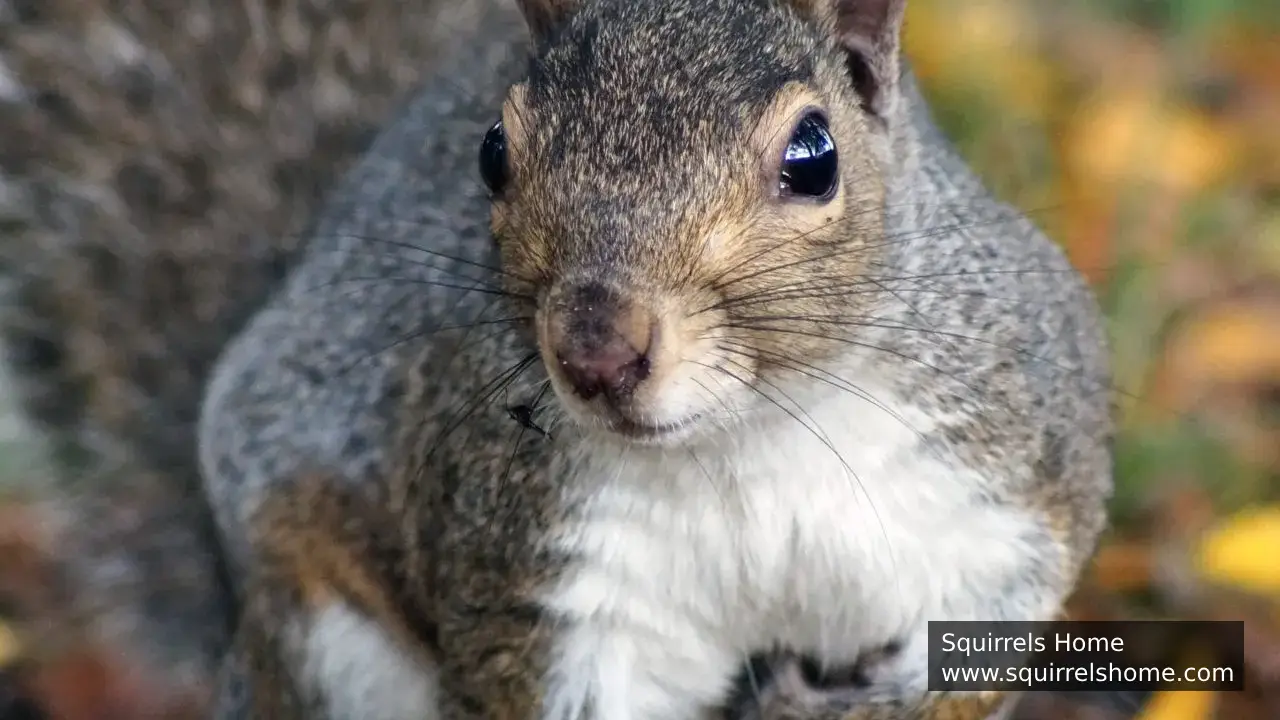Have you ever wondered how animals see the world? Some creatures see colors in ways we cannot imagine. For squirrels, their vision is quite special. Understanding their ability to detect colors helps us learn more about their behavior and how they survive. Let’s dive into what colors squirrels can see and why it matters.
How Do Squirrels See the World?
Squirrels, like many animals, see the world differently from humans. Their eyes are positioned on the sides of their heads, giving them a wide field of view. This helps them spot predators and find food quickly. However, the way they detect colors is unique compared to humans.
Humans have three types of color-detecting cells in their eyes called cones. These cones help us see a wide range of colors, from red to violet. Squirrels, on the other hand, have only two types of cones. This means their vision is dichromatic, which limits the range of colors they can see.
Which Colors Can Squirrels Detect?
Squirrels can mainly detect blue and green shades. Unlike humans, they struggle to see red and orange. To a squirrel, these colors might appear as muted or grayish tones. This is because their eyes lack the cone needed to process longer wavelengths of light, like red.
For example, if you place a bright red apple and a green apple in front of a squirrel, it may not notice the red apple as easily. However, the green apple will stand out because its color is within the range they can see clearly.
Why Is Color Detection Important for Squirrels?
Color detection plays a vital role in a squirrel’s daily life. It helps them find food, avoid danger, and navigate their environment.
- Finding Food: Squirrels rely on their vision to spot ripe fruits, nuts, and seeds. Since they can detect green and blue hues, they are more likely to notice fresh leaves or certain unripe fruits.
- Avoiding Predators: Being able to see movement in their environment, even in limited colors, helps squirrels stay alert. They rely on contrast rather than color to spot potential threats.
- Navigating Trees and Forests: Squirrels are excellent climbers. Their ability to see green and blue helps them distinguish between leaves, branches, and the sky, making it easier to leap safely from tree to tree.
How Does a Squirrel’s Vision Compare to Human Vision?
Humans and squirrels see the world in very different ways. Humans have trichromatic vision, which allows us to see a full spectrum of colors. This includes red, yellow, and purple, along with blue and green. Squirrels, with their dichromatic vision, miss out on many of these shades.
For example:
- A rainbow that appears vibrant to us might look much duller to a squirrel. They would mostly notice the blue and green parts of the rainbow.
- Bright red flowers that attract human attention may not stand out to a squirrel.
This difference in color detection doesn’t hinder squirrels. They rely more on other senses, such as smell and hearing, to compensate for their limited vision.
Do Squirrels See Better During the Day or Night?
Squirrels are diurnal animals, which means they are active during the day. Their vision is best suited for daylight conditions. Their eyes are adapted to detect movement and contrast rather than fine details.
At night, squirrels’ vision is not as sharp. They are not nocturnal animals like owls, so their eyes lack the adaptations needed to see well in the dark. This is one reason squirrels rest in their nests after sunset.
How Do Scientists Study Squirrel Vision?
Researchers use several methods to understand how squirrels see colors. One common approach is behavioral testing. In these tests, scientists present squirrels with objects of different colors and observe their reactions. For example, they might train a squirrel to associate a specific color with food and see how well it can identify that color.
Another method involves examining the structure of the squirrel’s eye. By studying the types of cones in their retina, scientists can determine which colors the animal is likely to detect.
Can Squirrels See Ultraviolet Light?
Some animals, like birds and bees, can see ultraviolet (UV) light, which is invisible to humans. Squirrels do not have this ability. Their vision is limited to the blue and green parts of the spectrum. While UV vision can be useful for certain species, squirrels thrive without it.
How Does Color Vision Help Squirrels Survive?
Even though their color vision is limited, squirrels have adapted well to their environment. Their ability to see green and blue helps them blend in with trees and leaves, offering natural camouflage. This reduces the chances of being spotted by predators.
Additionally, their sharp contrast detection helps them notice subtle movements in their surroundings. This skill is crucial for spotting predators or finding food, even if they can’t see every color.
Are All Squirrels’ Eyes the Same?
Most squirrels have similar vision, but there can be slight variations between species. For example:
- Tree squirrels rely heavily on their vision for climbing and spotting food in the trees.
- Ground squirrels might focus more on detecting predators on the ground.
Despite these differences, all squirrels share the same basic dichromatic vision.

How Does a Squirrel’s Habitat Affect Its Vision?
A squirrel’s habitat plays a role in how it uses its vision. For example, squirrels living in dense forests may rely more on their ability to see green hues, which helps them navigate through leaves and branches. On the other hand, squirrels in open grasslands might use their vision to detect predators against the blue sky.
This adaptability ensures that squirrels can survive in a wide range of environments, from urban parks to remote forests.
Can Squirrels Recognize Each Other by Sight?
Squirrels likely rely more on other senses, such as smell and sound, to recognize each other. While their vision helps them detect movement, they may not be able to distinguish individual squirrels by sight alone. Instead, they use vocalizations and scents to communicate and identify members of their species.
Do Baby Squirrels See Colors the Same Way as Adults?
When baby squirrels are born, they are blind and completely dependent on their mothers. As they grow, their vision develops, and they start to see the world in the same way as adult squirrels. By the time they are ready to leave the nest, their ability to detect colors and movement is fully developed.
Conclusion
Squirrels may not see the world in the same vibrant colors as humans, but their vision is perfectly suited to their needs. With their ability to detect blue and green hues, they can find food, avoid predators, and navigate their environments effectively. Their limited color vision doesn’t hold them back; instead, it shows how animals adapt to their surroundings to survive and thrive.
FAQs
1. Can squirrels see in the dark?
No, squirrels cannot see well in the dark. They are diurnal animals, which means their vision is adapted for daylight conditions. At night, they rely on their sense of hearing and smell more than their eyesight.
2. Do squirrels see better than humans?
In some ways, yes. Squirrels have a wide field of view, which helps them detect movement better than humans. However, they cannot see as many colors or fine details as we can.
3. Can squirrels recognize humans?
Squirrels can recognize humans, but not necessarily by sight. They are more likely to remember people based on consistent behaviors, such as feeding them, and may associate certain scents or sounds with a person.
4. Do squirrels’ eyes glow in the dark?
No, squirrels’ eyes do not glow in the dark. Unlike some nocturnal animals, they do not have a reflective layer in their eyes called the tapetum lucidum, which helps improve night vision.
5. Are squirrels’ eyes sensitive to bright light?
Squirrels are adapted to daylight conditions and are not particularly sensitive to bright light. However, like most animals, they may seek shade or shelter when exposed to very intense sunlight for long periods.
